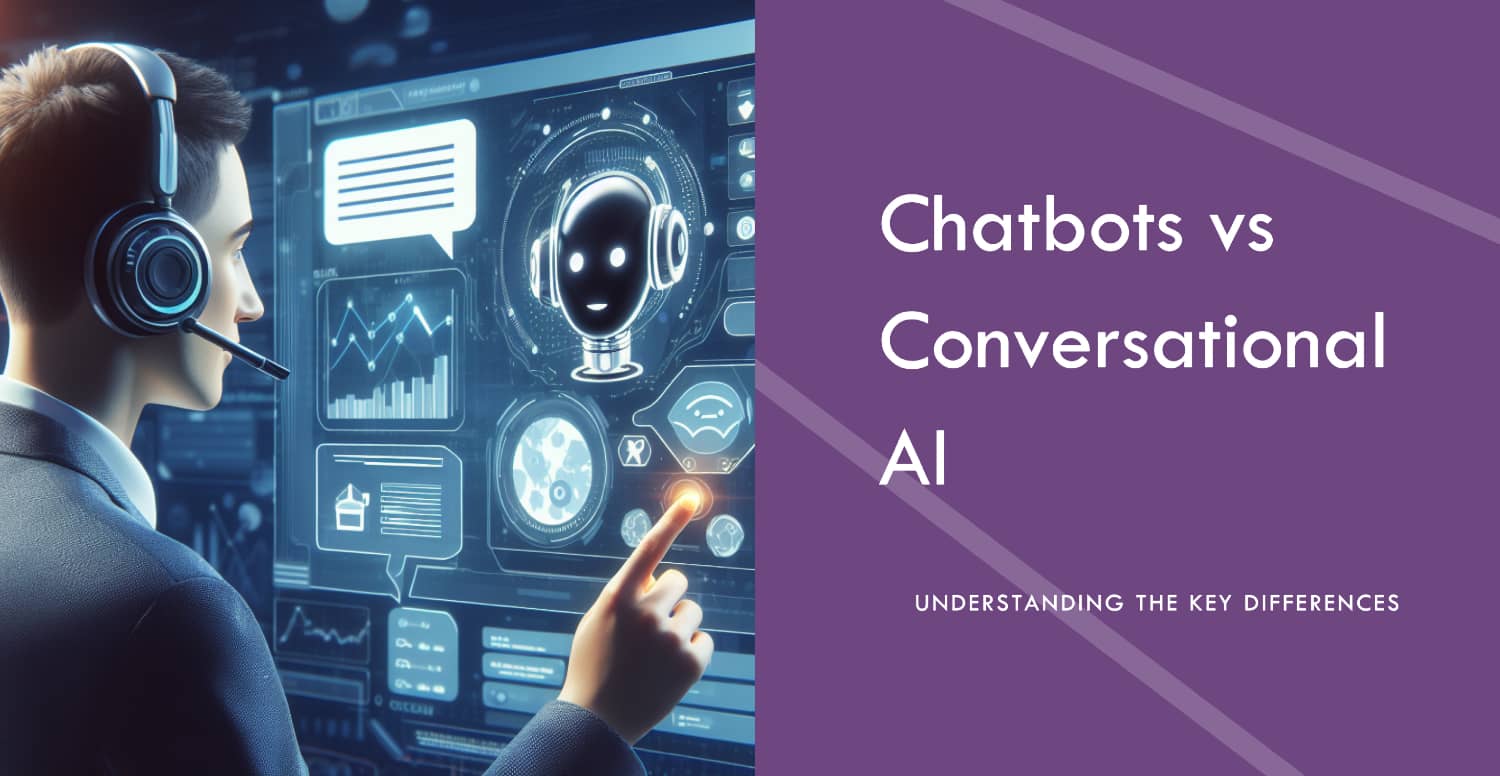Chatbots and conversational AI have become integral parts of our digital experience, assisting us in everything from customer service inquiries to purchasing recommendations. However, these two terms are often used interchangeably, leading to confusion regarding their distinct capabilities.
By understanding the key differences between chatbots and conversational AI, businesses can make informed decisions about leveraging these technologies to enhance operations and customer interactions.
Chatbots rely on predefined rules and responses to interact with users, allowing them to efficiently automate repetitive tasks like providing support FAQs or taking food orders. However, they lack more advanced natural language processing (NLP) abilities to deeply comprehend requests or adapt to new situations.
Conversational AI integrates machine learning and NLP to enable more flexible and human-like conversations. These systems can understand context, emotion, and multiple intents within queries to provide tailored and nuanced responses. Conversational AI allows for a wider range of applications like personal shopping assistants, enterprise knowledge bases, and empathetic customer service bots.
As chatbots and conversational AI continue advancing, they are reshaping how businesses engage with customers, transform operations, and deliver personalized product recommendations. Understanding their capabilities empowers organizations to explore impactful applications of these technologies.
This article will dive deeper into demystifying chatbots and conversational AI, highlighting their key differences, strengths, limitations, use cases, and the substantial impact they are having across industries.
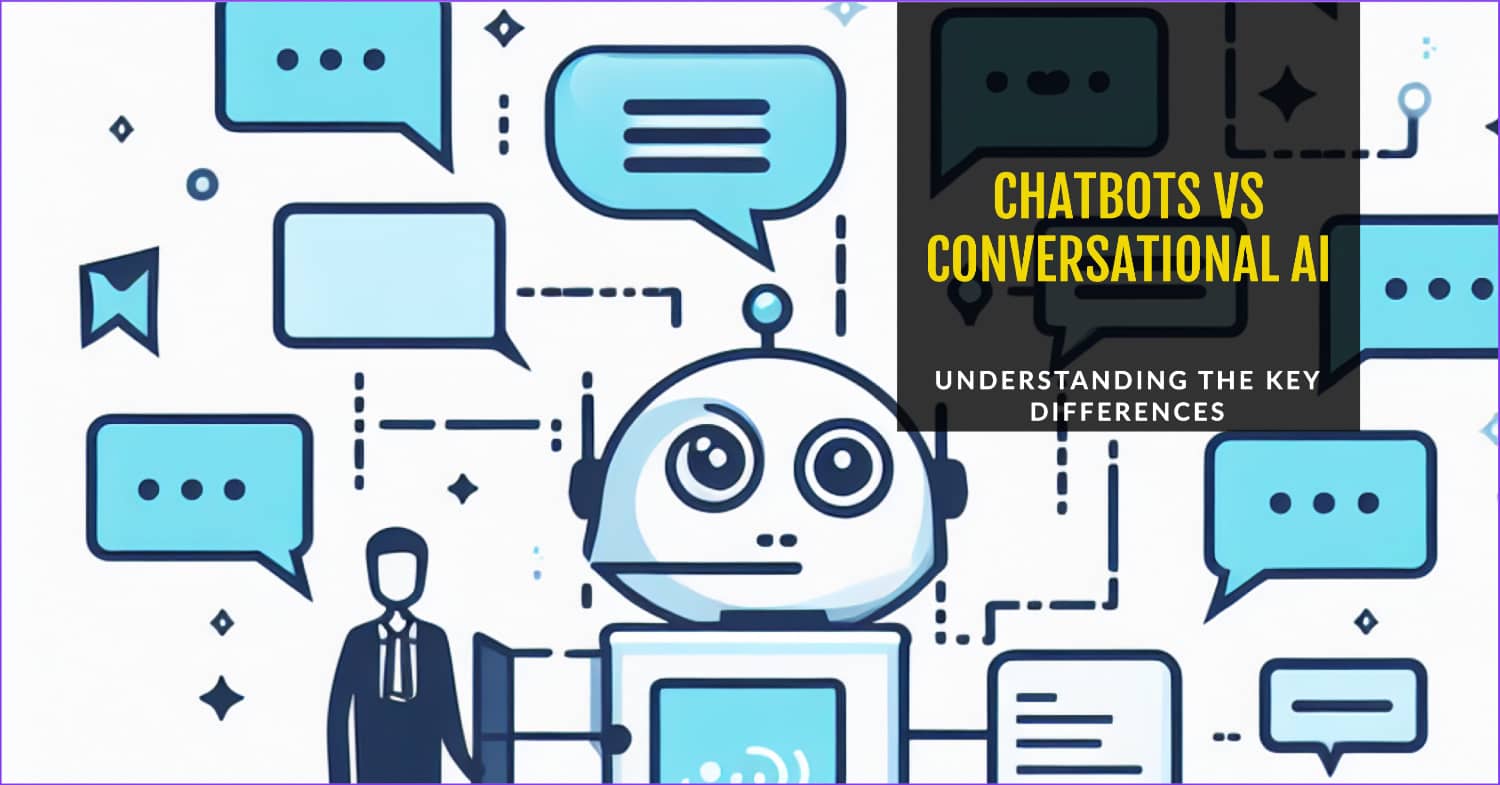
Key Differences between Chatbots and Conversational AI
While chatbots and conversational AI aim to deliver intuitive digital experiences, they have some fundamental differences:
Intelligence
Chatbots rely on hard-coded rules and predetermined conversation flows to match user queries with appropriate responses. They identify keywords and patterns rather than deeply comprehending the context or intent behind queries.
In contrast, conversational AI utilizes more advanced natural language processing (NLP), machine learning, and neural networks to interpret requests, understand their meaning, and respond accordingly. This provides more dynamic and contextualized conversations.
Range of Applications
Most chatbots are designed for narrow applications like providing basic customer support, completing simple forms, or taking food orders. They follow structured interaction pathways.
Conversational AI has a wider scope of potential applications across industries. It can handle open-domain conversations without predefined workflows, using contextual awareness to respond appropriately. This flexibility allows conversational AI to power assistants, knowledge bases, and empathetic support bots.
Human-Like Interaction
Interacting with a chatbot often feels scripted, leading users through pre-planned branches. Their responses can seem robotic without real adaptability.
Conversational AI aims to mimic human interactions with more flexible dialogues and understanding of linguistic nuances. The natural flow enables users to express requests conversationally rather than using rigid keyword-based input methods. This leads to more engaging user experiences.
In summary, while chatbots and conversational AI both enable automated digital conversations, conversational AI provides more advanced natural language capabilities for broader applications and humanized interactions. Recognizing these key differences allows businesses to assess the appropriate solution for their needs.
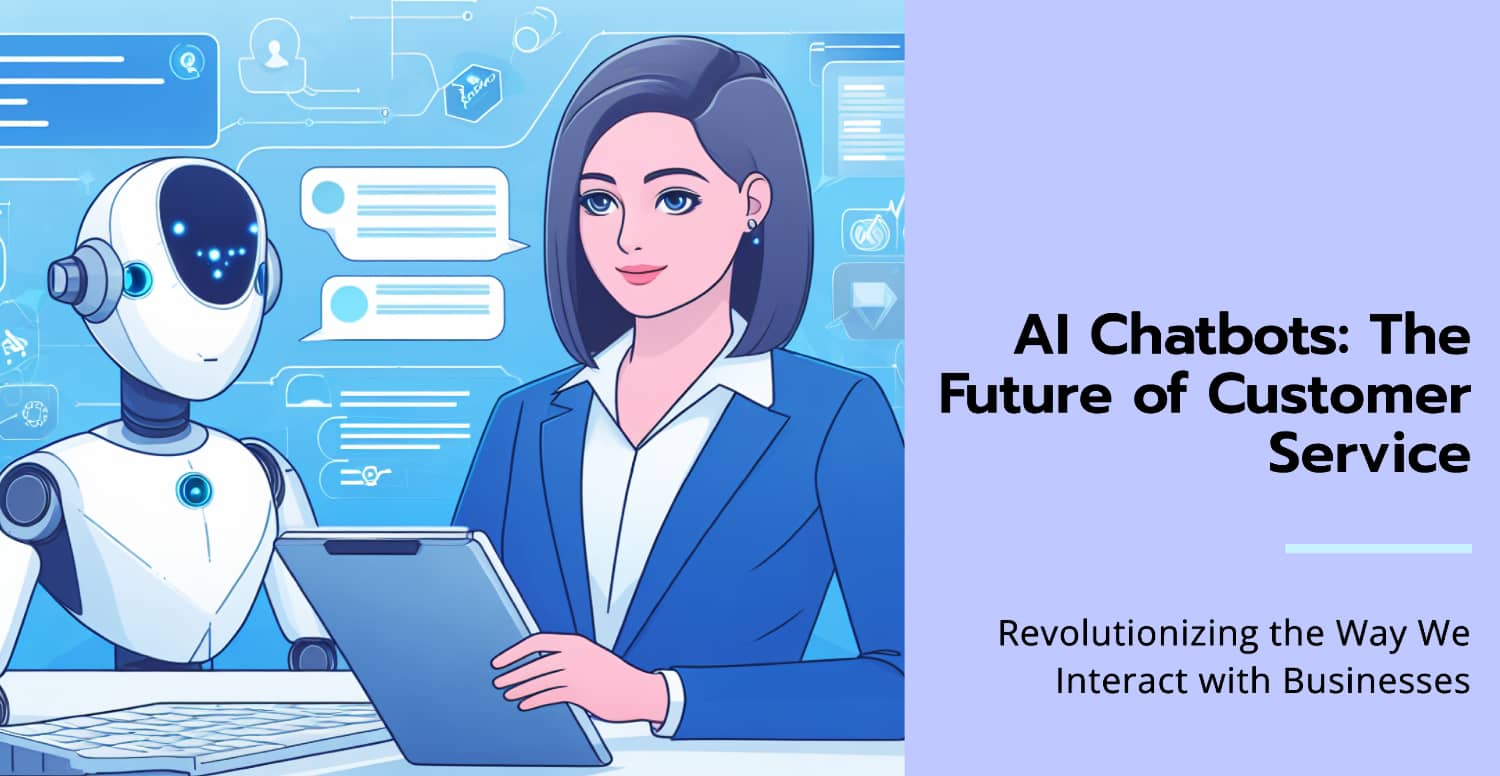
Chatbots
Chatbots are one of the more widely recognized forms of conversational automation. Let's explore some key examples along with their distinct strengths and limitations:
Examples
Common examples of business applications for chatbots include:
Customer support bots answering frequently asked questions
Restaurant chatbots processing food orders
Event ticket purchase platforms with chatbot integration
These demonstrate chatbots efficiently handling narrow and repetitive tasks within structured domains.
Strengths
Key strengths of chatbots include:
Cost-effectiveness - They are relatively affordable to develop and deploy at scale.
24/7 availability - Chatbots enable self-service options always available to users.
Process efficiency - Automating repetitive inquiries and tasks saves human efforts.
Limitations
However, chatbots also come with some notable limitations such as:
Restricted conversational flow - The rigid and predefined interaction pathways limit their adaptability.
Inability to handle complex queries - Anything beyond their rules requires escalating to a human agent.
No new learning - Without more advanced AI capabilities, they cannot learn from new interactions.
Understanding these key pain points of chatbots allows businesses to set appropriate expectations when integrating them into customer engagement strategies. Conversational AI solutions help overcome some of these restrictions for more meaningful and productive dialogues.
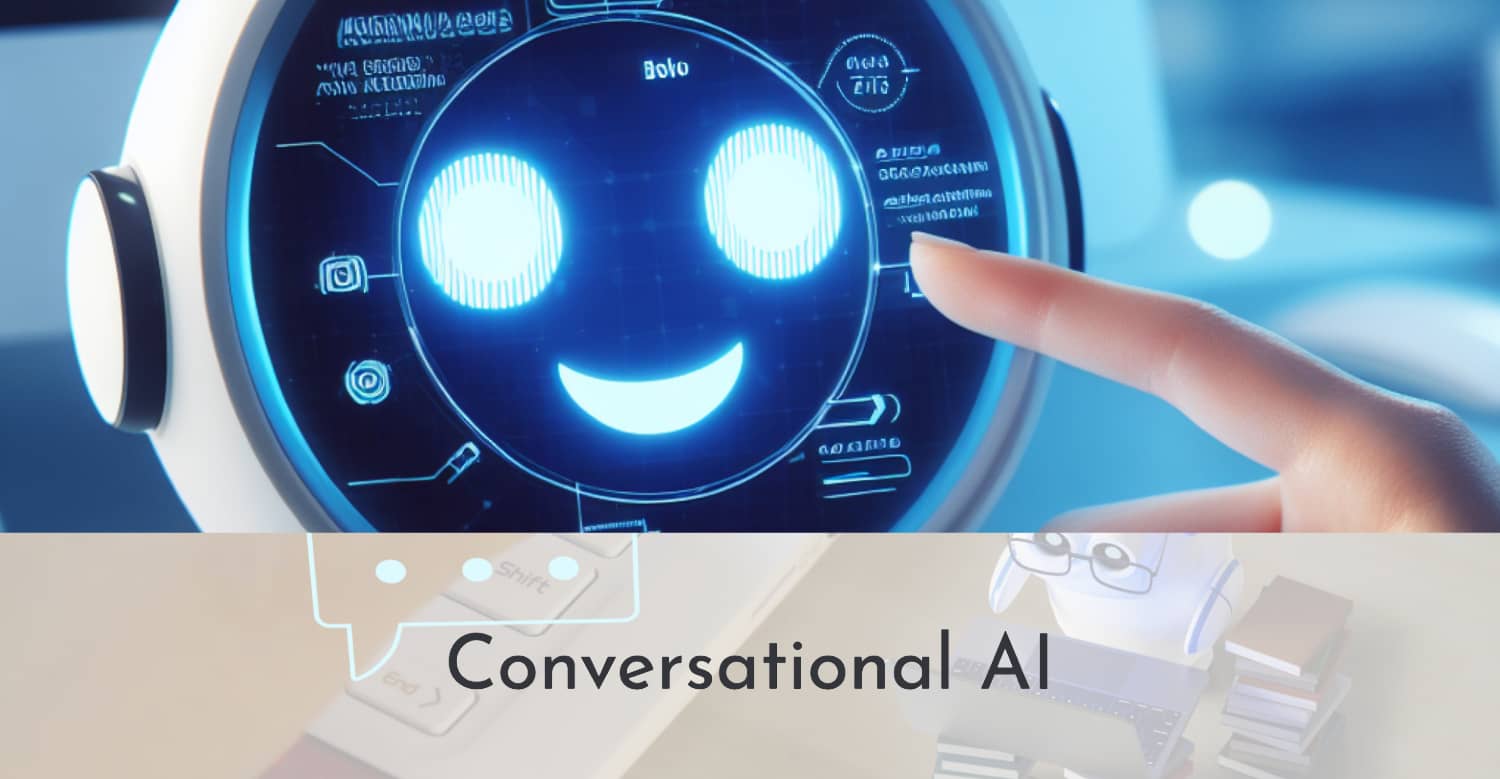
Conversational AI
Conversational AI represents the next evolution of digital experience automation through more advanced natural language processing and machine learning. Let's explore some notable examples and strengths of this technology:
Examples
Some common examples of conversational AI applications include:
Virtual assistants like Siri, Alexa, and Google Assistant interacting conversationally to assist users
Chatbots powered by deep learning algorithms that adapt through ongoing training
Intelligent customer service systems offering personalized and contextualized support
These demonstrate the broad applicability of conversational AI across use cases and industries.
Strengths
Key capabilities that enable the promise of conversational AI include:
Natural language processing to comprehend requests and linguistic nuances
Contextual understanding to retain meaning throughout multi-turn conversations
Continuous learning to improve interpretations and responses over time
Applications
Such strengths lend themselves to use cases like:
Delivering personalized product recommendations based on individual consumer preferences
Developing enterprise-wide knowledge management systems accessing evolving information stores
Automating complex customer service tasks while expressing empathy
The domain flexibility and evolving intelligence of conversational AI unlocks immense possibilities for enhancing digital experiences.
By harnessing the latest AI advancements, conversational systems can engage users naturally while comprehending and responding to their specific needs and contexts. Recognizing these expanding capabilities allows businesses to envision valuable applications within their unique environments.
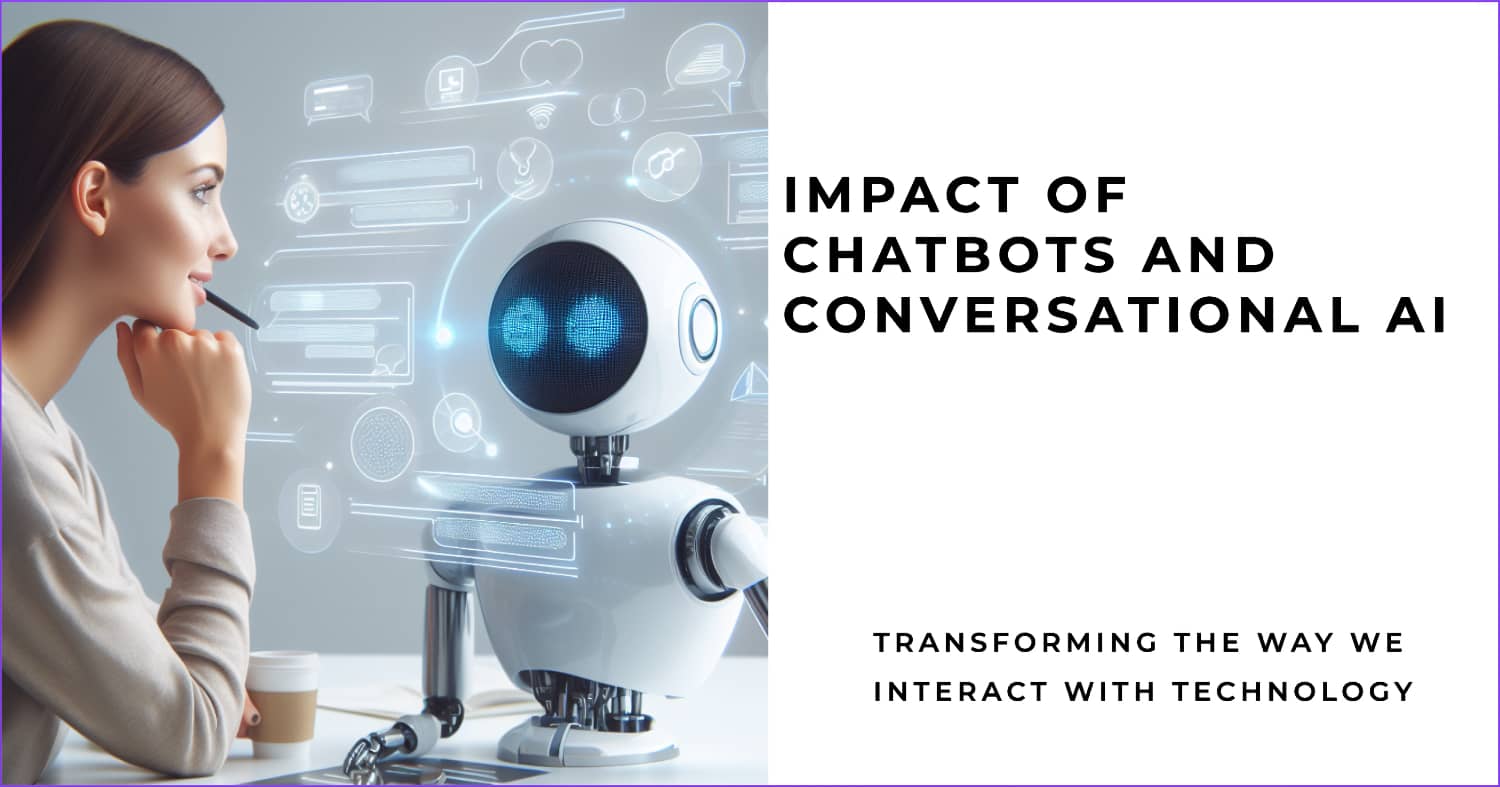
Impact of Chatbots and Conversational AI
As chatbots and conversational AI continue maturing, they are having a substantial impact across industries including:
Reshaping Customer Interactions
These technologies are transforming how brands engage customers by:
Enhancing customer service experiences with 24/7 accessibility
Providing self-service options for quick and personalized resolutions
Fostering deeper customer relationships through conversational engagement
They contribute to key metrics like improved customer satisfaction, increased first contact resolution, and higher brand affinity.
Transforming Businesses
Within business operations, benefits include:
Streamlining operations by seamlessly integrating AI capabilities across channels
Optimizing resource allocation by automating repetitive tasks to reduce human efforts
Enabling business model innovation through expanding digital offerings
Enhancing User Experience
For end users, these technologies create value by:
Providing personalized recommendations catered to individual preferences
Simplifying site navigation through intuitive conversational interfaces
Making interactions more seamless, intuitive, and accessible across channels
As chatbots and conversational AI shape the next era of human-computer interaction, understanding their growing impact enables businesses to explore potentially transformative applications to stay ahead in connecting with customers and honing competitive advantage.

Distinguishing Between the Digital Dialogue
Chatbots and conversational AI represent pivotal technologies shaping the landscape of human-computer interaction through automated dialogues.
As highlighted, chatbots provide efficient and accessible self-service support for narrow domains, while more advanced conversational AI delivers flexible and humanized interactions applying NLP and machine learning.
Key differentiators come down to:
Intelligence: Rigid rules vs dynamic learning
Application range: Task-specific vs multi-domain
Interaction style: Scripted vs natural conversational flow
These distinctions help identify the appropriate solution for an organization's specific priorities and use cases when augmenting customer and employee experiences with AI-powered conversational capabilities.
As these technologies continue evolving, their embedding across industries illustrates the substantial value in terms of optimized operations, transformed business processes, and enhanced user experiences.
By setting clear expectations grounded in a nuanced understanding of their respective strengths, companies can strategically leverage chatbots and conversational AI as indispensable pillars within digital transformation initiatives aiming to connect with stakeholders in an increasingly intuitive yet impactful manner.
